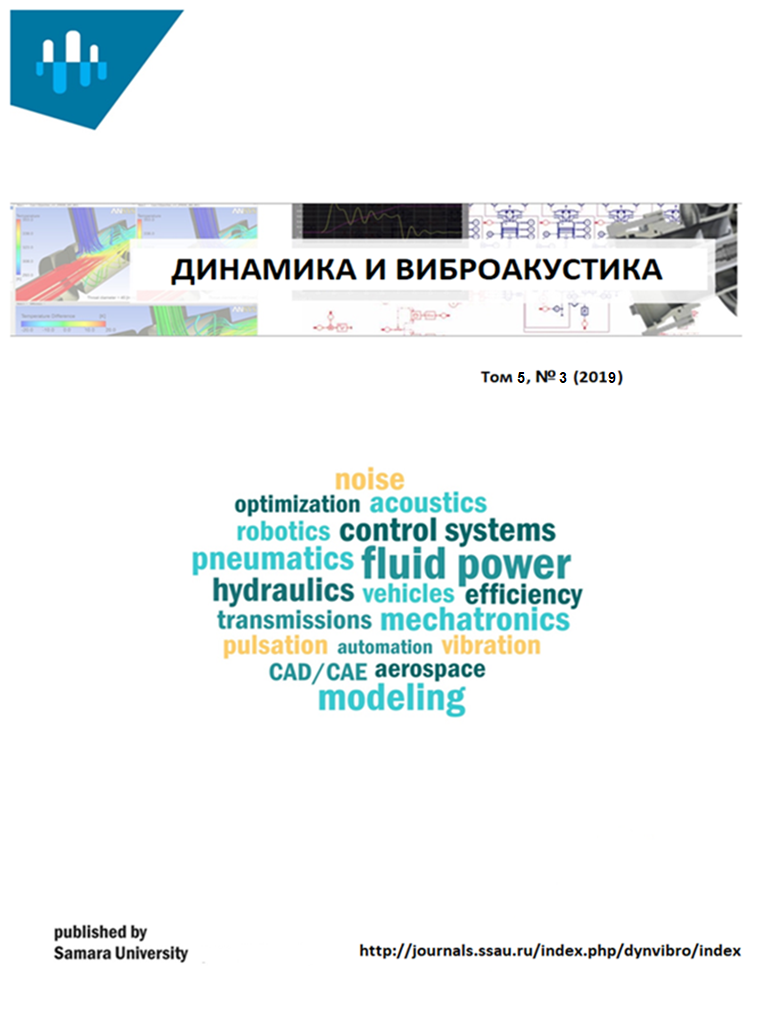Vol 5, No 3 (2019)
Articles
DEVELOPMENT OF A TEST BENCH FOR TESTING THE UNDERWATER ROBOT CONTROL SYSTEM WITH VARIABLE GEOMETRY OF THE BODY
Abstract
For underwater robots in the past three decades, the problem of energy efficiency and acoustic noiselessness has arisen sharply. The solution of these problems is inextricably linked with the solution of the problems of dynamics and vibroacoustics arising in the flow of a liquid under the flow of underwater bodies. These problems include the problem of the pressure pulsations occurrence and velocity distributed over the surface of the object, as well as noise and vibrations caused by these pulsations. To create energy-efficient and low-noise underwater robots, it is necessary to create methods for influencing the structure of wall currents and the shape of the aerodynamic surfaces of the robot in order to reduce its surface friction, as well as impedance. In this paper, we consider the development of an experimental bench for testing the main executive systems of an underwater robot with an anisotropic hull, including a buoyancy variation system, a trim and roll change system, and a hull geometry changing system.
 6-13
6-13


INVESTIGATION OF HYDRAULIC AND VIBROACOUSTIC CHARACTERISTICS OF A PERSPECTIVE VALVE WITH THE WORKING BODY AS A ELASTIC TUBE ELEMENT
Abstract
The article deals with the design of a perspective throttle valve with an elastic tubular element designed to reduce the vibration and noise of hydraulic systems, which are subject to increased requirements for vibro-acoustic characteristics. The analysis of known similar devices is carried out and the design of the valve-throttle is proved. A detailed analysis of the deformed state of the elastic tubular element is performed and the relationship between the deformations of this element and the hydraulic parameters of the working medium in the flowing part of the valve is shown. The experimental flow characteristics of the valve under study are analyzed, the analysis of which has made it possible to identify the parts of the characteristics at which the constant flow rate remains constant when the pressure drop across the valve changes. The substantiation of this feature of the hydraulic characteristics of a valve with an elastic element is given. The ways of further research directions of the prospective valve are shown.
 14-19
14-19


 20-28
20-28


EXPERIMENTAL ESTIMATION OF ACOUSTIC EFFICIENCY OF APPLICATION OF POLYMERIC MATERIALS IN THE PUMP DESIGN
Abstract
The paper describes measures to reduce the level of acoustic emittion of a low-gear external gear pump. On the basis of the experiment on a bench installation, the acoustic efficiency using rotors were made from PEEK material in the design of a gear pump was evaluated when shaft speed was of 1000 ... 2500 rpm and a discharge pressure of 3 ... 12 bar. For comparison, the article presents the acoustic efficiency by the relative difference of the acoustic emittion of the pump with configuration of the «steel-steel» and «steel-PEEK» rotors. It also provides an overview of methods for reducing mechanical noise in gears, damping of modern structural polymeric materials based on polyamide, polyacetal, polyphenylenesulfide and polyetheretherketone in comparison with traditional engineering materials - steel, aluminum, gray cast iron is estimated. Recommendations for using of polymeric materials in the design of the pump are proposed.
 29-36
29-36


ABOUT AN APPROACH TO DETERMINING ACTIONS TO INCREASE THE TECHNICAL AND ECONOMIC EFFICIENCY OF ACOUSTIC TESTING
Abstract
Shipboard valves in the design and production are subjected to a variety of tests, including such specific types of tests as acoustic, necessary to determine the noise level created by the product.
With stricter requirements for perspective marine equipment, the requirements for the accuracy of tests conducted on ship pipeline fittings as a source of acoustic noise are increasing. Taking into account that the main bench equipment was designed and built more than 30 years ago, when the influence of external factors (such as the impact of vibration caused by the increased traffic load and the development of the metro) was not so significant, a comprehensive study of approaches is needed to increase the accuracy of tests on the existing stand equipment, taking into account the increased level of external interference.
 37-40
37-40











